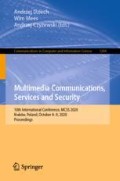Abstract
This work presents an experimental study of malware classification using the Microsoft Malware Classification Challenge 2015 dataset. We combine the approach of the winning solution to the Microsoft Malware Classification Challenge with the neural network approach. Using a combination of n-grams features for both assembly (asm) and byte code enables us to significantly improve the result. By mixing multiple approaches, we are able to get the best log-loss result of 0.0025, so far. This comes mostly from the classical XGBoost method with n-gram contributions from the binary and assembly code. However, understanding this result is still incomplete. The standard neural network approaches (even with LSTM) alone give poorer results compared to the XGBoost, based on mostly n-gram. It is not clear why adding 6-grams to the binary code analysis does not improve results. There are many more options to be tested in the future, in particular networks.
Supported by PUT statutory funds. One of the authors (CJ) acknowledges the NVIDIA GPU Grant of Quadro P6000 card.
Access this chapter
Tax calculation will be finalised at checkout
Purchases are for personal use only
References
Ahmadi, M., Ulyanov, D., Semenov, S., Trofimov, M., Giacinto, G.: Novel feature extraction, selection and fusion for effective malware family classification. In: Proceedings of the Sixth ACM on Conference on Data and Application Security and Privacy, CODASPY 2016, pp. 183–194 (2016). https://doi.org/10.1145/2857705.2857713
Bengio, Y., Ducharme, R., Vincent, P., Janvin, C.: A neural probabilistic language model. J. Mach. Learn. Res. 3, 1137–1155 (2003). http://jmlr.org/papers/v3/bengio03a.html
Chelba, C., Norouzi, M., Bengio, S.: N-gram language modeling using recurrent neural network estimation. CoRR abs/1703.10724 (2017)
Cianflone, A., Kosseim, L.: N-gram and neural language models for discriminating similar languages. CoRR abs/1708.03421 (2017)
Devlin, J., Chang, M., Lee, K., Toutanova, K.: BERT: pre-training of deep bidirectional transformers for language understanding. CoRR abs/1810.04805 (2018). http://arxiv.org/abs/1810.04805
Gibert, D., Mateu, C., Planes, J., Vicens, R.: Using convolutional neural networks for classification of malware represented as images. J. Comput. Virol. Hacking Tech. 15(1), 15–28 (2018). https://doi.org/10.1007/s11416-018-0323-0
Le, Q., Boydell, O., Mac Namee, B., Scanlon, M.: Deep learning at the shallow end: malware classification for non-domain experts. Digit. Invest. 26, S118–S126 (2018)
Li, M.Q., Fung, B.C.M., Charland, P., Ding, S.H.H.: I-MAD: a novel interpretable malware detector using hierarchical transformer. CoRR abs/1909.06865 (2019)
Trofimov, M., Dmitry Ulyanov, S.S.: Kaggle ‘Microsoft malware classification challenge’ 3rd place solution. https://github.com/geffy/kaggle-malware
Narayanan, B.N., Davuluru, V.S.P.: Ensemble malware classification system using deep neural networks. Electronics 9, 721 (2020). https://doi.org/10.3390/electronics9050721
Pieczynski, D., Jedrzejek, C.: Malware detection using black-box neural method. In: Proceedings of MISSI - Multimedia and Network Information Systems 2018, pp. 180–189 (2018). https://doi.org/10.1007/978-3-319-98678-4_20
Raff, E., et al.: An investigation of byte n-gram features for malware classification. J. Comput. Virol. Hacking Tech. 14(1), 1–20 (2016). https://doi.org/10.1007/s11416-016-0283-1
Ronen, R., Radu, M., Feuerstein, C., Yom-Tov, E., Ahmadi, M.: Microsoft malware classification challenge. CoRR abs/1802.10135 (2018)
Shabtai, A., Moskovitch, R., Feher, C., Dolev, S., Elovici, Y.: Detecting unknown malicious code by applying classification techniques on opcode patterns. Secur. Informat. 1(1), 1 (2012). https://doi.org/10.1186/2190-8532-1-1
Simopoulos, C.M.A., Weretilnyk, E.A., Golding, G.B.: Prediction of plant lncRNA by ensemble machine learning classifiers. BMC Genom. 19(1), 316 (2018). https://doi.org/10.1186/s12864-018-4665-2
Vaswani, A., et al.: Attention is all you need. In: Annual Conference on Neural Information Processing Systems 2017, pp. 5998–6008 (2017). http://papers.nips.cc/paper/7181-attention-is-all-you-need
Wang, X., Liu, J., Chen, Q.: Big 2015 Microsoft malware classification challenge, first place say no to overfitting. https://github.com/xiaozhouwang/kaggle_Microsoft_Malware
Yan, J., Qi, Y., Rao, Q.: Detecting malware with an ensemble method based on deep neural network. Sec. Commun. Netw. 2018 (2018). https://doi.org/10.1155/2018/7247095
Zak, R., Raff, E., Nicholas, C.: What can n-grams learn for malware detection? In: 12th International Conference on Malicious and Unwanted Software, MALWARE 2017, Fajardo, PR, USA, pp. 109–118 (2017). https://doi.org/10.1109/MALWARE.2017.8323963
Author information
Authors and Affiliations
Corresponding author
Editor information
Editors and Affiliations
Rights and permissions
Copyright information
© 2020 Springer Nature Switzerland AG
About this paper
Cite this paper
Wyrwinski, P., Dutkiewicz, J., Jedrzejek, C. (2020). Ensemble Malware Classification Using Neural Networks. In: Dziech, A., Mees, W., Czyżewski, A. (eds) Multimedia Communications, Services and Security. MCSS 2020. Communications in Computer and Information Science, vol 1284. Springer, Cham. https://doi.org/10.1007/978-3-030-59000-0_10
Download citation
DOI: https://doi.org/10.1007/978-3-030-59000-0_10
Published:
Publisher Name: Springer, Cham
Print ISBN: 978-3-030-58999-8
Online ISBN: 978-3-030-59000-0
eBook Packages: Computer ScienceComputer Science (R0)

